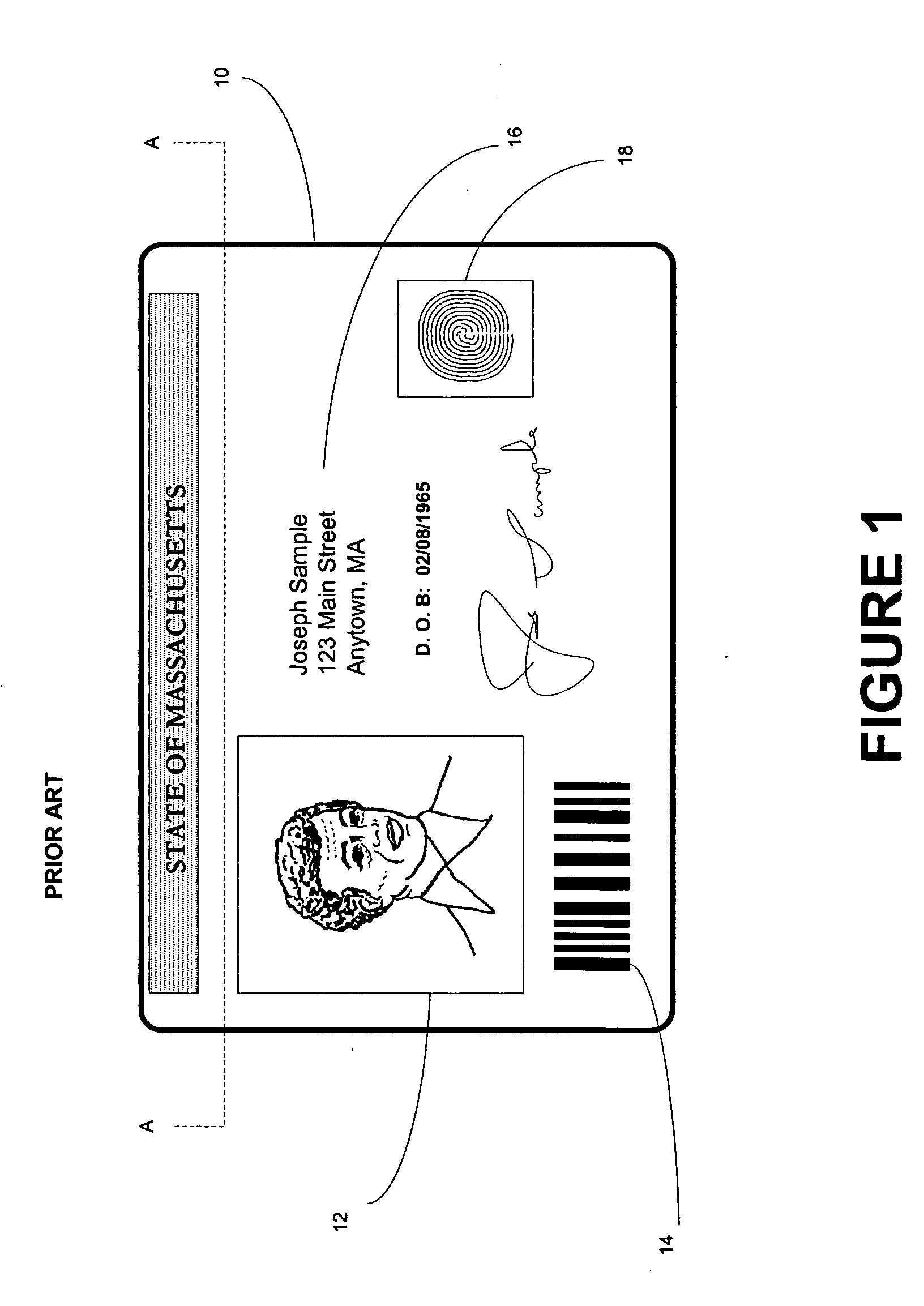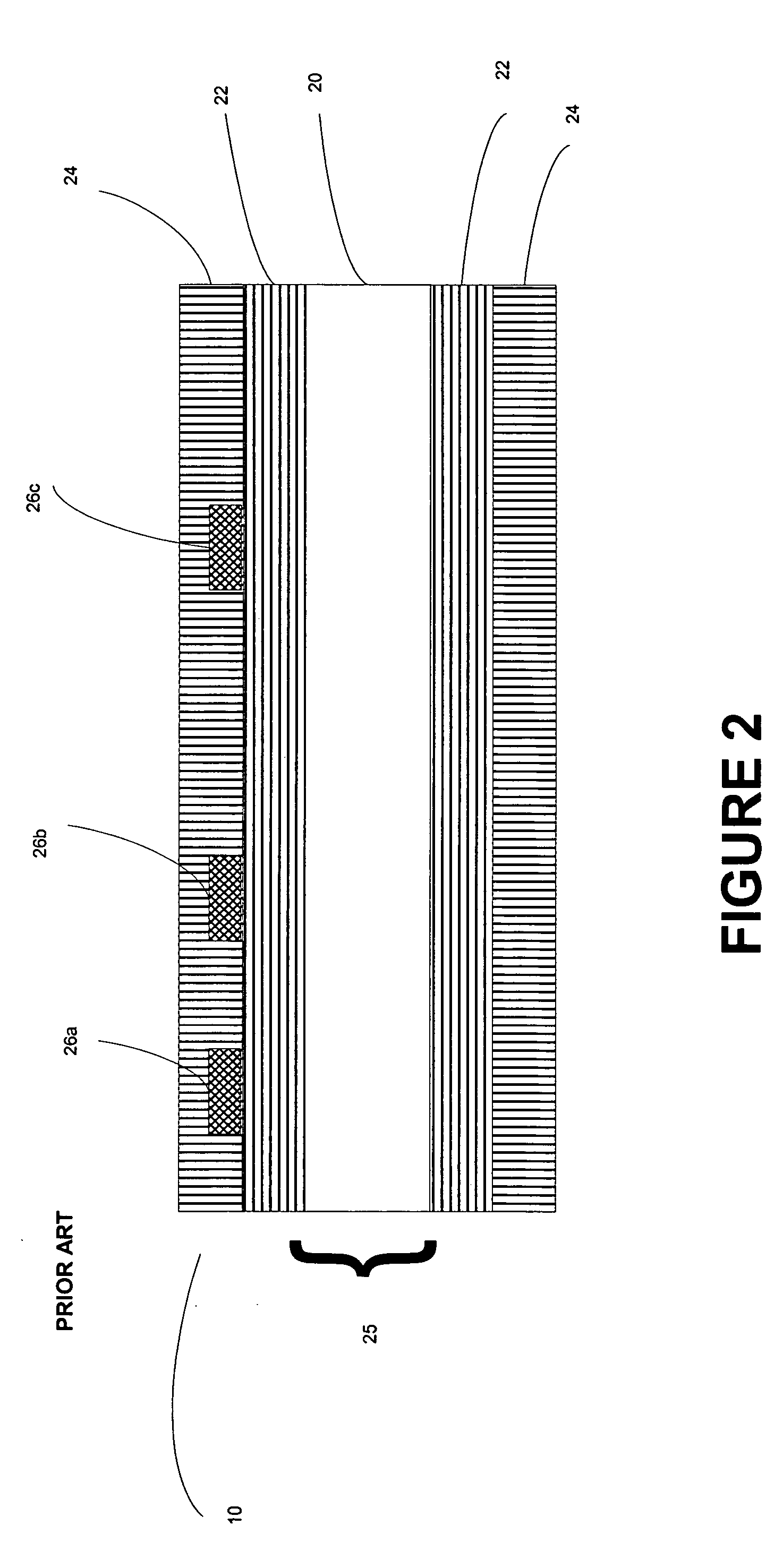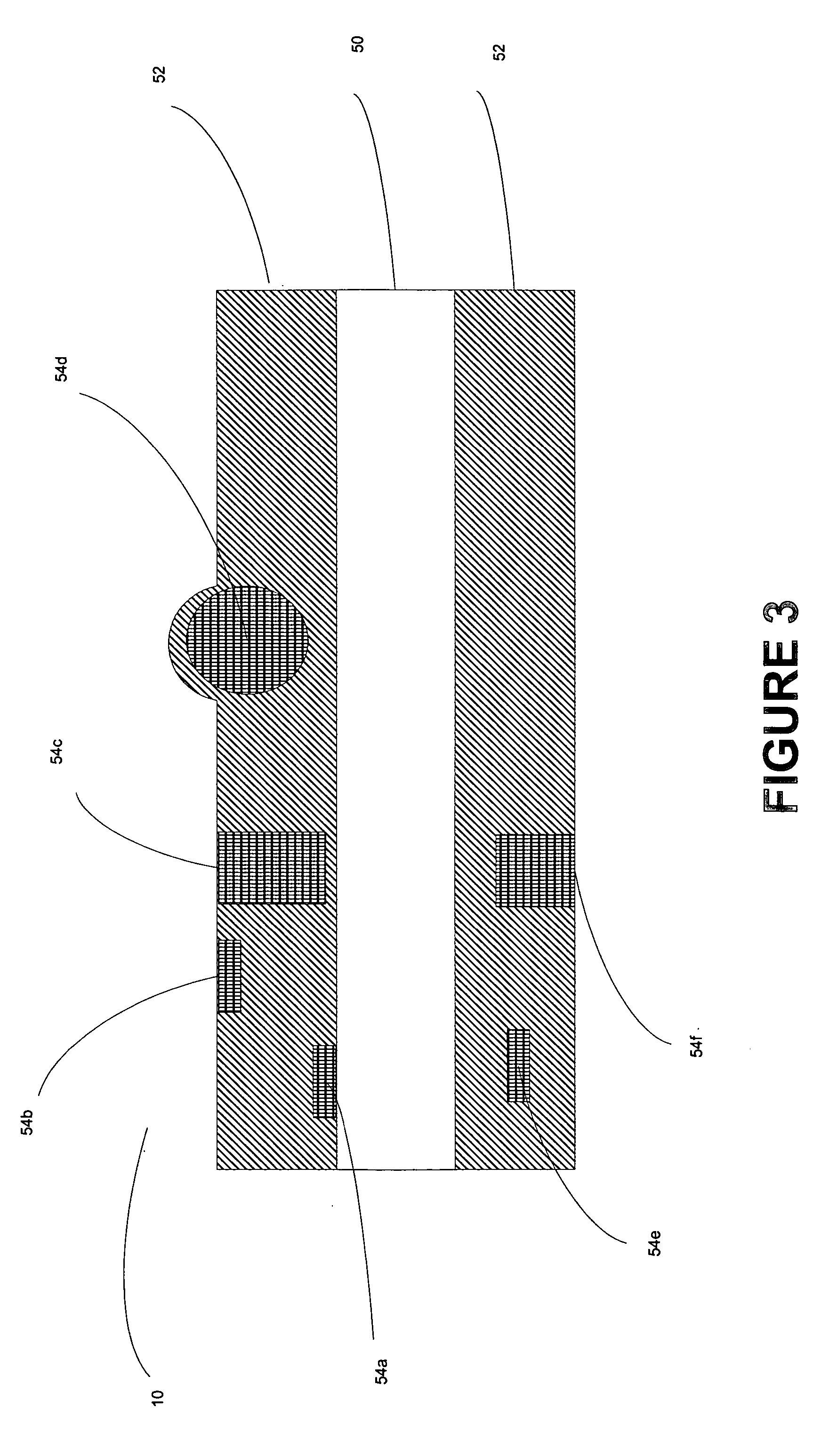Laser engraving methods and compositions, and articles having laser engraving thereon
a laser engraving and composition technology, applied in the direction of photosensitive material auxillary/base layer, thermography, nuclear engineering, etc., can solve the problems of counterfeiting or alteration, laser marking of some types of materials does not produce an adequate contrast for all applications, and certain limitations still exist, so as to reduce the cost of consumables, the effect of easy counterfeiting or alteration
- Summary
- Abstract
- Description
- Claims
- Application Information
AI Technical Summary
Benefits of technology
Problems solved by technology
Method used
Image
Examples
second embodiment
For example, FIG. 4 is an illustrative cross sectional view of an identification document in accordance with the first aspect of the invention. In the embodiment of FIG. 4, the ID document 10 preferably includes a multi-layered structure. For purposes of illustration, however, the ID document 10 may have a front outward appearance generally similar to the identification document 10 of FIG. 1, although the construction and components of the cross-section shown in FIG. 4 differs from the prior art. In the embodiment of FIG. 4, the portion of first laminate 52 containing the inventive laser enhancing additive is disposed at least partially within a layer of another material, such as so-called “plain” laminate 56 (i.e., laminate that does not contain the inventive laser enhancing additive). When a laser beam is applied to the first laminate 52, a third indicium 54G is formed. The plain laminate 56 may comprise a material that is inherently sensitive to laser radiation or can be a materi...
third embodiment
FIG. 5 is an illustrative cross sectional view of an identification document 10 in accordance with the first aspect of the invention. In the embodiment of FIG. 5, the ID document 10 preferably includes a multi-layered structure. For purposes of illustration, however, the ID document 10 may have a front outward appearance generally similar to the identification document 10 of FIG. 1, although the construction and components of the cross-section shown in FIG. 5 differs from the prior art. In the embodiment of FIG. 5, a first portion of the inventive laser enhancing additive is disposed in a first laminate layer 52 and a second portion of the inventive laser enhancing additive is disposed in a second laminate layer 55. Specifically, in this embodiment, the first laminate layer 52 contains an effective amount of at least one of copper potassium iodide (CuKI3) or copper iodide (CuI) and the second laminate layer 55 contains an effective amount of at least one of the following: zinc sulfi...
fourth embodiment
The inventive laser enhancing additive also can be used in a laminate that has one or more additional laminate layers bonded over it. For example, FIG. 6 is an illustrative cross sectional view of an identification document in accordance with the invention. In the embodiment of FIG. 6, the ID document 10 preferably includes a multi-layered structure. For purposes of illustration, however, the ID document 10 may have a front outward appearance generally similar to the identification document 10 of FIG. 1, although the construction and components of the cross-section shown in FIG. 6 differs from the prior art. In FIG. 6, the ID card 10 includes a core material 50 (shown for illustrative purposes only to be about 10 mils thick) to which is laminated a layer (shown for illustrative purposes only to be about 5 mils thick) of first laminate 52 to which the inventive laser enhancing additive is added. Over the first laminate 52 is a layer of second laminate 58 (shown for illustrative purpo...
PUM
| Property | Measurement | Unit |
|---|---|---|
| thick | aaaaa | aaaaa |
| thick | aaaaa | aaaaa |
| non-transparent | aaaaa | aaaaa |
Abstract
Description
Claims
Application Information
 Login to View More
Login to View More - R&D
- Intellectual Property
- Life Sciences
- Materials
- Tech Scout
- Unparalleled Data Quality
- Higher Quality Content
- 60% Fewer Hallucinations
Browse by: Latest US Patents, China's latest patents, Technical Efficacy Thesaurus, Application Domain, Technology Topic, Popular Technical Reports.
© 2025 PatSnap. All rights reserved.Legal|Privacy policy|Modern Slavery Act Transparency Statement|Sitemap|About US| Contact US: help@patsnap.com



